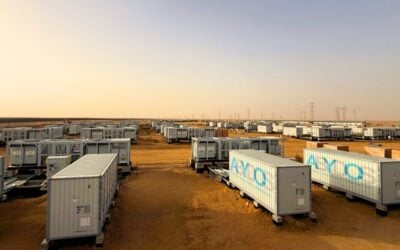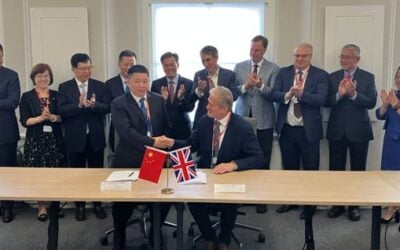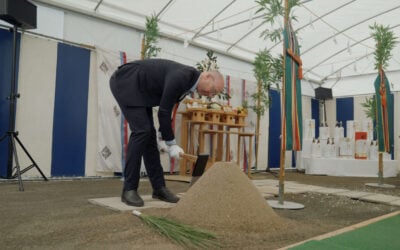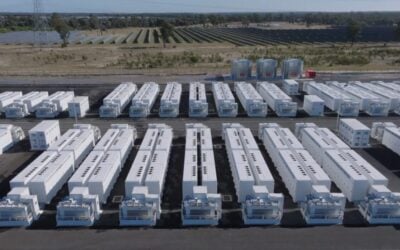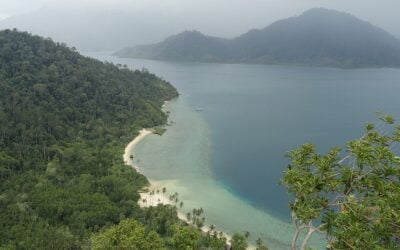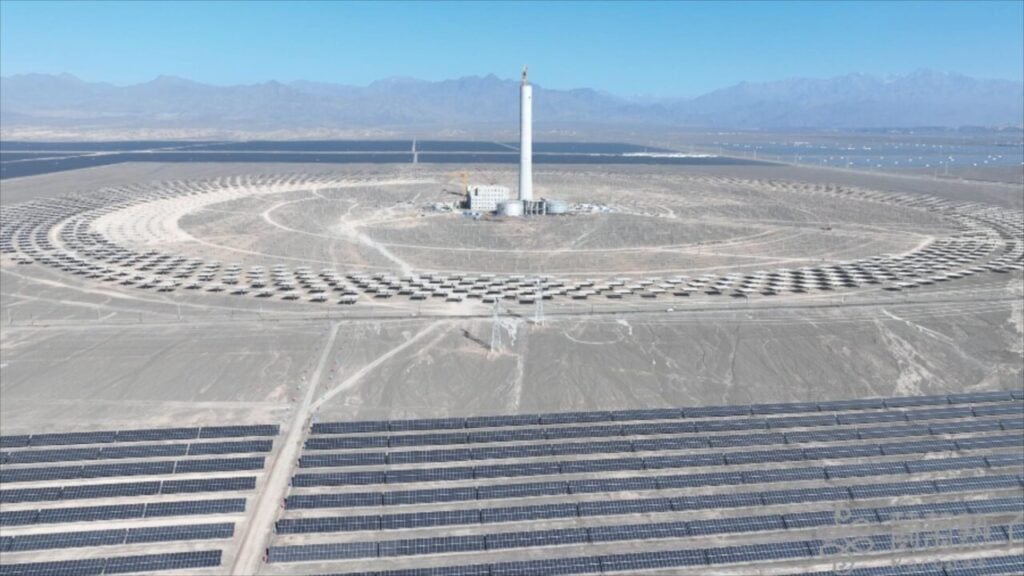
A 100MW thermal solar and molten salt energy storage system in Xinjiang, China, is set to be completed and grid-connected by the end of the year, part of a project which has also deployed conventional solar PV.
The first phase of the 1GW ‘solar thermal energy storage + photovoltaic integration’ project in Turfan, Xinjiang, has been completed, according to announcements from the State Grid Turfan Power Supply Company on PR Newswire and state-owned outlet Turfan Media Center.
Enjoy 12 months of exclusive analysis
- Regular insight and analysis of the industry’s biggest developments
- In-depth interviews with the industry’s leading figures
- Annual digital subscription to the PV Tech Power journal
- Discounts on Solar Media’s portfolio of events, in-person and virtual
The project pairs 900MW of conventional solar PV and the 100MW thermal solar energy storage system, with a total investment of RMB6 billion (US$840 million). The conventional solar PV portion of the project is now complete while the conditions for full capacity and grid connection have also been completed, the State Grid company said.
The solar thermal portion of the project is expected to be complete and connected to the grid by the end of the year, said Zhang Peng, production manager of China Energy Engineering Group Northwest Electric Power Construction Engineering Co in the Chinese-language Turfan Media Center release.
Although the the releases didn’t provide further details on the thermal solar molten salt storage system, various reports have described it as an 8-hour duration energy storage project.
Thermal solar salt energy storage has in other instances meant using concentrated solar power (CSP) to heat and melt salt and store that thermal energy for charging, and then discharging the system by using the heat from the molten salt to power a turbine generator, after which the salt is circulated back into the system for ‘charging’ again.
That includes a project in Australia from Vast Solar, reported on by Energy-Storage.news back in 2020, and the Crescent Dunes CSP project in Nevada, US. The latter was originally developed by SolarReserve but is now owned by ACS and provides energy to utility NV Energy.
Crescent Dunes has a power rating of 110MW and an energy storage capacity of over 1GWh, and images from the Xinjiang project provided in the announcements above and below show the two have similar designs.
Thermal energy storage is typically used in industrial settings where there is both excess heat generated but also a huge need for heat. However, many claim the levelised cost of storage (LCOS) for some kinds of thermal storage is far lower than for lithium-ion battery energy storage system (BESS) technology, potentially making it suitable for grid-connected applications.
The Turfan, Xinjiang project has also required the construction of two two 220 kV booster substations.
China is often the location for some of the largest-scale installations of novel or non-lithium energy storage technologies, regularly covered by Energy-Storage.news. Just in the past few months, projects claiming to be the largest to use flywheel technology, sodium-ion, semi-solid battery technology and pumped hydro energy storage (PHES) were completed.


